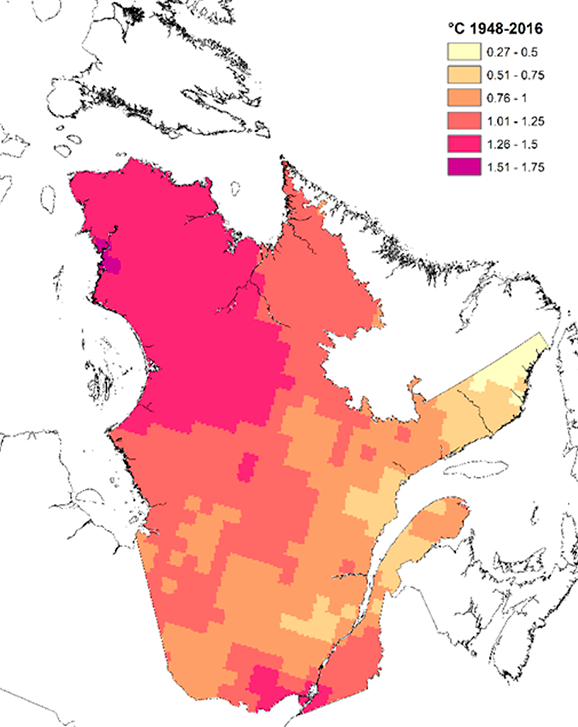Temperatures
Compared to Canada as a whole, Quebec, like the neighbouring Atlantic provinces, has experienced lower average annual temperature increases over the past 70 years. Temperatures in Canada have increased by 1.7°C, compared to 1.1°C for the province of Quebec. Coast-to-coast differences are partly explained by the influence of large natural climate oscillations that amplified warming in western Canada during the second half of the 20th century.
However, when the effect of natural oscillations is removed, warming becomes more consistent across the country and temperature increases caused by greenhouse gases persist.

As in other northern regions, Quebec’s warming exceeds the global estimate, which is 0.8°C in the same period. The greatest increases in average annual temperatures are observed in northern Quebec. There, the increase has been 1.5°C between 1948 and 2016. In the centre and the south of the province, the increases fluctuate around 1°C. On the shores of the Estuary and Gulf of St. Lawrence, the changes are around 0.5°C (Figure 1).
Also over the last 70 years, very hot temperatures in summer have increased, both day and night, thereby increasing the number of cooling degree days. In addition, the frost-free season and the agricultural growing season gained nearly a month.
With a longer and warmer fall season, winters are shorter and less cold. The coldest temperatures in winter have warmed for both day and night. Unsurprisingly, this warming has led to a reduction in heating degree days. Finally, there are fewer days with freeze/thaw events on an annual basis.
Figure 1 : Observed increases (°C) in average annual temperatures in Quebec between 1948 and 2016. Figure source: adapted from Figure 2 of Vincent et al., 2015.